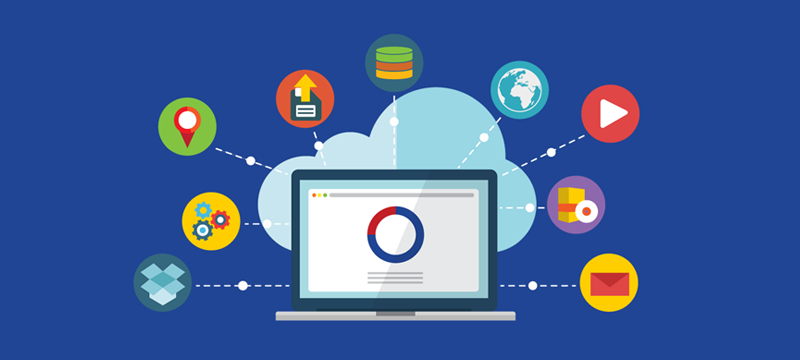The benefits of cloud computing continue to make it very attractive for enterprises. More businesses are starting to make use of the cloud and many of those have made an initial move are migrating more of their applications to it.
As cloud computing begins to develop, it will become an even more important resource for enterprises, with many predicting that cloud-native architectures will soon become the default option. In this post, we’ll look at five important cloud developments to look out for in 2018.
- Cloud services solutions set to expand exponentially
2018 will see far more enterprises benefit from the cloud’s high-performance capabilities. Software as a Service (SaaS) is a cost-effective option that gives businesses greater flexibility, and the increasing availability of infrastructure as a service (IaaS) and platform as a service (PaaS) means there is much wider access to these cloud solutions.
According to a white paper by Cisco, this year will see SaaS become the world’s most deployed cloud service, accounting for two-thirds of all cloud-based workloads. The use of PaaS and IaaS solutions is also expected to grow considerably. Those most likely to take advantage of these services are enterprises that want to simplify their operations and make their online services easier for users to access. - Increased capacity of cloud storage
As cloud services become the norm, enterprises will need to move and store far more of their data into the cloud. As a result, 2018 will see a massive expansion in data storage capacity. Whilst improved storage technology will help play a role in this, in the main, it will be achieved through increased investment by service providers in new datacentres and high-capacity storage devices. It is estimated that, by the end of 2018, the world’s storage capacity will have doubled from the previous year to 1.1 ZB.
As a result, enterprises will have far more storage to make use of for data-rich operations. Big data analytics, which needs to store and process vast data sets, will become easier and more accessible, enabling companies to benefit from the valuable insights they provide on consumer behaviour, operational processes and business systems, etc. SMEs can also benefit from increased storage capacity as it is likely prices will reduce as a consequence. - The rise of the Internet of Everything (IoE)
The most talked about developments over the last year have been about artificial intelligence, machine learning and the internet of things (IoT). While these technologies are expected to remain high growth areas, this year, the big buzz is all about the Internet of Everything (IoE).
Developments in real-time data analytics and cloud computing, such as edge computing, are enabling enterprises to make use of IoE technology which utilises machine to machine communication, human communication, data and computer processing. One of the cloud’s main roles in this development will be to help simplify the interactions in these highly complicated systems.
In one sense, the IoE makes people part of the network by enabling them to intelligently interact and communicate with all its devices as well as any other people who are connected. This brings many benefits, Google, for example, has developed a new headset that can translate, in real-time, up to forty different languages for its wearer. Another example of IoE technology is Japan’s famous hospitality robots, which welcome and talk with guests and carry out a range of services for them – again, in real-time. - Better connectivity
With far more data being collected from a much wider range of devices, there is a great deal of pressure on network providers to provide better and faster connectivity. Both enterprises and end users expect this. During 2018, we will see a concerted effort to improve network speeds and bring on technology, such as edge computing, that can process data where it is generated and reduce the amount to be transferred to datacentres. At the same time, the development of full 5G networking can speed up mobile data transfer too. - More security challenges ahead
Cyberattacks are an ongoing issue that all enterprises need to be prepared for, and with increased regulations, such as GDPR, coming into force, the need to be secure has never been more important.
In 2018, the expectation is that we will see a rise in the number of state-sponsored attacks against cloud networks, especially at risk are those organisations which, if attacked, could cause problems for national infrastructure. Aside from the government and military, this includes organisations involved with emergency services, utilities, transport, health, finance, food production and distribution and many others.
Besides state-sponsored attacks, we’ll also see more sophisticated attacks from cybercriminals. As a result, we will see enterprises increase their use of strong security tools and opt for the managed security services offered by hosting providers.
Conclusion
2018 will see the continued shift towards cloud computing by enterprises. This will be encouraged by the wider range of cloud service solutions on offer, the increased capacity of cloud storage, the rise of IoE technology and better connectivity. In addition, the managed security services provided by cloud providers will give additional protection against cyberattacks.
If you are considering migrating to the cloud, check out our enterprise cloud packages.

